Radiogardase
Heyl Chem.-pharm. Fabrik GmbH & Co. KG
Heyl Chem.-pharm. Fabrik GmbH & Co. KG
Radiogardase® Prussian blue insoluble capsules For oral administration
FULL PRESCRIBING INFORMATION: CONTENTS*
- RADIOGARDASE DESCRIPTION
- CLINICAL PHARMACOLOGY
- RADIOGARDASE INDICATIONS AND USAGE
- RADIOGARDASE CONTRAINDICATIONS
- WARNINGS
- PRECAUTIONS
- RADIOGARDASE ADVERSE REACTIONS
- OVERDOSAGE
- RADIOGARDASE DOSAGE AND ADMINISTRATION
- Adults and Adolescents
- Pediatrics (2 – 12 years)
- Treatment with Prussian blue insoluble for radioactive cesium (137Cs) contamination
- Treatment with Prussian blue insoluble for thallium contamination
- Further considerations for radioactive cesium contamination
- Further considerations for thallium contamination (radioactive and non-radioactive)
- Considerations for multiple contaminant exposure (radioactive and non-radioactive)
- HOW SUPPLIED
- PATIENT TREATMENT DATA
FULL PRESCRIBING INFORMATION
RADIOGARDASE DESCRIPTION
Prussian blue insoluble capsules contain insoluble ferric
hexacyanoferrate(II), with an empirical formula of Fe4[Fe(CN)6]3 and a
molecular weight of 859.3 Daltons. It is provided as 0.5 gram of Prussian blue
powder in gelatin capsules with 0-38 mg of microcrystalline cellulose. The
dark blue capsules are imprinted with the light blue inscription:  PB. The powder may vary from uniformly fine, dark
granules to coarse light and dark-colored granules. The structural formula for
Prussian blue insoluble is shown below.
PB. The powder may vary from uniformly fine, dark
granules to coarse light and dark-colored granules. The structural formula for
Prussian blue insoluble is shown below.
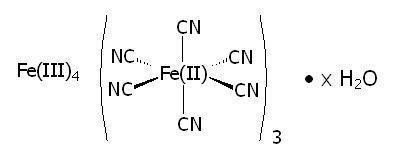
The crystal structure of Prussian blue is a cubic lattice with the Fe(II) and Fe(III) atom occupying the corners of the cube and the cyanide groups positioned on the sides.
CLINICAL PHARMACOLOGY
General
Prussian blue insoluble, ferric(III) hexacyanoferrate(II), after oral ingestion is not absorbed through the intact gastrointestinal wall. Its clearance from the body depends on the gastrointestinal tract transit time. Prussian blue insoluble acts by ion-exchange, adsorption, and mechanical trapping within the crystal structure and has a very high affinity for radioactive and non-radioactive cesium and thallium.
Prussian blue insoluble binds cesium and thallium isotopes in the gastrointestinal tract after these isotopes are ingested or excreted in the bile by the liver thereby reducing gastrointestinal reabsorption (enterohepatic circulation). In studies of rats, pigs, and dogs that were internally contaminated with cesium and thallium, the presence of the insoluble complexes in the gastrointestinal lumen, changed the primary elimination route from the kidney to the feces and increased the rate of elimination of these two contaminants.
The rate of cesium and thallium elimination was proportional to the duration and dose of Prussian blue insoluble. (See CLINICAL PHARMACOLOGY, Pharmacokinetics .) A radioactive element has a constant rate of disintegration that is reflected by its physical half-life. The rate of element elimination from the body is reflected by its biologic half-life. The combined rate of radiation disintegration and rate of element elimination is reflected by the effective half-life.
Cesium-137 (137Cs) has a physical half-life of 30 years with a beta energy peak at 174.0 keV. Following entry into the blood, it is distributed uniformly through all body tissues. Approximately 10% of cesium is eliminated rapidly with a biological half-life of 2 days, and 90% is eliminated more slowly, with a biological half-life of 110 days. Less than 1% of the cesium was retained with a longer biological half-life of about 500 days. Cesium follows the movement of potassium and is excreted into the intestine, reabsorbed from the gut into the blood, then to the bile, where it is excreted again into the gut (enterohepatic circulation). Without Prussian blue insoluble treatment, ~80% of cesium is excreted through the kidneys and ~20% in the feces. Because of cesium's long physical half-life, the rate of radiation elimination is similar to the rate of element elimination from the body.
Thallium-201 (201Tl) has a physical half-life of 3 days with electron and photon emissions with a gamma energy peak at 167.4 keV. Following entry into the blood, thallium is distributed in the kidneys (3%) and all other organs (97%). Non-radioactive thallium, depending upon the tissue, has a biological half-life of 8 – 10 days. Thallium also follows the movement of potassium and is excreted by the bile in enterohepatic recirculation. Without Prussian blue insoluble treatment, the fecal to urine excretion ratio of thallium is approximately 2:1.
Based on the mechanisms of action, Prussian blue insoluble may bind other elements (e.g., potassium), and cause electrolyte or other nutritional imbalances. (See PRECAUTIONS, Laboratory Tests .)
Dose-Response Relationship
Dose-response studies have not been conducted in human subjects. In a study using rats (n = 40, mean body weight range of 188 – 219 g) injected with 137Cs it was demonstrated that there is a dose response relationship of the amount of radiation elimination with Prussian blue insoluble doses from 1 to 50 mg/day. There is little difference in radiation elimination rate between Prussian blue insoluble doses of 50 to 100 mg/day. In Table 1, the % of Injected Radiation Dose Remaining is defined as the percentage of the total injected dose of 137Cs remaining in the body at 96 hours post administration.
| Prussian blue insoluble Dose (mg/day) | % Injected 137Cs Dose Remaining (Range) |
|---|---|
| Untreated | 58.1 (63.3 – 53.4) |
| 1 | 9.42 (13.2 – 6.72) |
| 10 | 1.17 (1.64 – 0.84) |
| 50 | 0.57 (0.80 – 0.41) |
| 100 | 0.52 (0.73 – 0.37) |
The results of fecal analysis from those patients contaminated with 137Cs and treated with Prussian blue insoluble showed higher activities of 137Cs in feces, and the associated whole body radioactivity counts showed a more rapid rate of elimination from the body. The effectiveness of Prussian blue insoluble for one patient is shown in Figure 1. The whole body content of radioactive material of 137Cs in kilo-Bequerels (kBq) is on the y-axis. Time in days is on the x-axis. Line "A" represents the whole body activity of 137Cs during Prussian blue insoluble treatment at 10 g daily. The dotted line represents extrapolation of the whole body activity if treatment was continued. Line "B" represents the whole body activity of 137Cs, after Prussian blue insoluble was stopped.
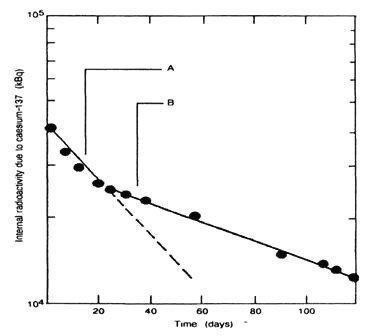
Figure 1. Comparisons of 137Cs whole body activity during
and after Prussian blue insoluble
treatment.
Line A: 137Cs whole body activity (kBq) DURING Prussian blue insoluble treatment at 10
g/day.
Line B:
137Cs whole
body activity (kBq) AFTER Prussian blue insoluble
treatment is terminated.
Dotted line:
Extrapolated decrease in 137Cs whole body activity (kBq)
if Prussian blue insoluble treatment was continued.
Pharmacokinetics
In an animal study (pigs, n = 38), after a single dose of 40 mg of labeled Prussian blue insoluble, 99% of the administered Prussian blue dose was excreted unchanged in feces. Absorption from multiple doses has not been studied.
Food effect studies were not identified in the literature. In animal studies, Prussian blue insoluble was not significantly absorbed. Food may increase the effectiveness of Prussian blue insoluble by stimulating bile secretion.
Food is known to increase bile production and enterohepatic circulation. The increase in enterohepatic circulation may increase the amount of cesium and thallium in the gastrointestinal lumen, and may increase the amounts available for binding with Prussian blue insoluble.
Adequate and well-controlled pharmacokinetic and pharmacodynamic studies in renal impaired and/or compromised liver function patients were not identified in the literature. Prussian blue insoluble is not systemically bioavailable and does not rely on renal elimination or hepatic metabolism; therefore, the use of Prussian blue insoluble is not contraindicated in these groups of patients. However, Prussian blue insoluble may be less effective in patients with impaired liver function due to decreased excretion of cesium and thallium in the bile.
Clinical Trials
Epidemiological studies and literature review data were reported in 106 subjects who received Prussian blue insoluble after excessive exposure to 137Cs or non-radioactive thallium.
Overall, in literature reports, 65 patients and 7 normal human volunteers received Prussian blue insoluble after internal contamination with 137Cs.
In a 1987 incident in Goiânia, Brazil, 46 persons with heavy internal contamination with 137Cs were treated with Prussian blue insoluble. Data on the whole body effective half-life of 137Cs, during and after Prussian blue insoluble treatment was completed on 33/46 of these patients. The untreated mean whole body effective half-life of 137Cs is 80 days in adults, 62 days in adolescents, and 42 days in children. Prussian blue insoluble reduced the mean whole-body effective half-life of 137Cs by 69% in adults, by 46% in adolescents and by 43% in children. The following table shows the decrease in whole body effective half-life of 137Cs in patients during Prussian blue insoluble treatment as compared to being off treatment.
Table 2: Cesium-137 Effective Half-life During and After Treatment with Prussian blue Insoluble (In Days, by Age, and Dose of Prussian blue Insoluble)
| Group | Age (Years) | Prussian blue insoluble dose (grams/day) | No. of Pts. | During Prussian blue insoluble Treatment – 137Cs T1/2 | Off Prussian blue insoluble Treatment – 137Cs T1/2 |
|---|---|---|---|---|---|
| Adults | > 18 | 10 | 5 | 26 ± 6 days | 80 ± 15 days (all 21 adult patients) |
| Adults | > 18 | 6 | 10 | 25 ± 15 days | |
| Adults | > 18 | 3 | 6 | 25 ± 9 days | |
| Adolescents | 12 -14 | ≤ 10 | 5 | 30 ± 12 days | 62 ± 14 days |
| Children | 4 - 9 | ≤ 3 | 7 | 24 ± 3 days | 42 ± 4 days |
Data from additional literature articles including a study of 7 human volunteers contaminated with trace doses of 137Cs and reports on 19 patients contaminated with 137Cs in other incidents show a similar reduction in whole body effective half-life after Prussian blue insoluble treatment.
Thirty-four patients treated with Prussian blue insoluble for non-radioactive thallium poisoning are reported in the literature. Prussian blue insoluble treatment reduced the mean serum biologic half-life of thallium from 8 days to 3 days.
RADIOGARDASE INDICATIONS AND USAGE
Prussian blue insoluble is indicated for treatment of patients with known or suspected internal contamination with radioactive cesium and/or radioactive or non-radioactive thallium to increase their rates of elimination.
RADIOGARDASE CONTRAINDICATIONS
None
WARNINGS
Prussian blue insoluble is administered to decrease radiation exposure. It does not treat the complications of radiation exposure. Patients contaminated with high doses of 137Cs may develop radiation toxicity including bone marrow suppression with severe neutropenia and thrombocytopenia. Supportive treatment for radiation toxicity symptoms should be given concomitantly with Prussian blue insoluble treatment.
In radiological emergencies, the type of elemental exposure may not be known. Prussian blue insoluble may not bind to all radioactive elements and some radioactive elements may not undergo enterohepatic circulation, which is needed for Prussian blue insoluble binding and elimination. Patients contaminated with unknown or multiple radioactive elements may require treatment with other agents in addition to Prussian blue insoluble.
PRECAUTIONS
Enter section text here
General
Prussian blue insoluble can cause constipation. Decreased gastrointestinal motility will slow the transit time of 137Cs bound to Prussian blue insoluble in the gastrointestinal tract, and may increase the radiation absorbed dose to the gastrointestinal mucosa. Constipation occurring during Prussian blue insoluble treatment may be treated with a fiber based laxative and/or a high fiber diet. Prussian blue insoluble should be used with caution in patients with disorders associated with decreased gastrointestinal motility.
Information for Patients
Cesium-137 is excreted in the urine and feces. Appropriate safety measures should be taken to minimize radiation exposure to others. When possible, a toilet should be used instead of a urinal, and it should be flushed several times after each use. Spilled urine or feces should be cleaned up completely, and patients should wash their hands thoroughly. If blood or urine gets onto clothing, such clothing should be washed separately.
Parents and child-care givers should take extra precaution in handling the urine and feces of pediatric patients. Care is intended to prevent re-exposure to the adult and pediatric patient.
In patients with constipation, a fiber based laxative and/or high fiber diet is recommended during treatment with Prussian blue insoluble.
Patients taking Prussian blue insoluble should be informed that their stools might be blue-colored.
In patients who cannot swallow capsules, when the capsules are opened and the contents are mixed with food and eaten, the mouth and teeth might be colored blue.
Laboratory Tests
Prussian blue insoluble may bind electrolytes found in the gastrointestinal tract. Asymptomatic hypokalemia, with serum potassium values of 2.5 – 2.9 (normal 3.5 – 5.0), was reported in 3/42 (7%) of patients on treatment with Prussian blue insoluble. Serum electrolytes should be closely monitored during Prussian blue insoluble treatment. Caution should be exercised when treating patients with pre-existing cardiac arrhythmias or electrolyte imbalances.
Prussian blue insoluble may bind some orally administered therapeutic drugs. As appropriate, blood levels or clinical response to oral medications should be monitored.
Drug-Drug Interactions
Adequate and well-controlled drug-drug interaction studies in humans were not identified in the literature. In preliminary studies, animals were contaminated with several different radioisotopes and treated with several different radioeliminators. Based on these animal data, co-administration of Prussian blue with other radioeliminators does not affect the efficacy of Prussian blue for 137Cs.
Binding to some therapeutic drugs and essential nutrients is possible. The literature contains anecdotal reports of asymptomatic hypokalemia and decreased bioavailability of oral tetracycline. The serum levels and, or clinical response to critical orally administered products should be monitored.
Carcinogenesis, Mutagenesis, Impairment of Fertility
Studies with Prussian blue insoluble to evaluate carcinogenesis, mutagenesis and impairment of fertility have not been performed.
All males who received a whole body radiation absorbed dose greater than 1 Gy of 137Cs, 2 – 8 years later had either oligospermia or azospermia.
Pregnancy Category C
Comprehensive animal reproductive studies have not been conducted with Prussian blue insoluble. Since Prussian blue insoluble is not absorbed from the gastrointestinal tract, effects on the fetus are not expected. In one patient that became pregnant 3 years and 8 months after being treated with Prussian blue insoluble for internal contamination with 137Cs (8 mCi), complications or birth defects were not identified in the literature report.
Cesium-137 is known to cross the human placenta. One patient, in Goiânia, was contaminated with 0.005 mCi 137Cs during her 4th month of pregnancy. She was not treated with Prussian blue insoluble. At birth the concentration of 137Cs was the same in the mother and the infant. Thallium crosses the human placenta. Reported fetal effects in the reviewed literature include fetal death, failure to thrive, alopecia, or in some instances outwardly normal development. The risk of toxicity from untreated radioactive cesium or thallium exposure is expected to be greater than the reproductive toxicity risk of Prussian blue insoluble.
Nursing Mothers
Studies to determine if Prussian blue insoluble is excreted in human milk have not been conducted. Since Prussian blue insoluble is not absorbed from the gastrointestinal tract, its excretion in milk is highly unlikely. However, cesium and thallium are transmitted from mother to infant in breast milk. Women internally contaminated with cesium or thallium should not breast feed.
Pediatric Use
The safety and efficacy of Prussian blue insoluble and its dosing for the pediatric population was extrapolated from adult data and supported by pediatric patients who were internally contaminated with 137Cs and treated with Prussian blue insoluble in the Goiânia accident.
Overall, 27 pediatric patients received Prussian blue insoluble in the range of 3 – 10 grams per day in divided doses. Prussian blue insoluble treatment reduced the whole body effective half-life of 137Cs by 46% in adolescents and by 43% in children aged 4 to 12 years of age. In 12 patients for whom the rate of radiation elimination data are available, the rate was similar to that in adults treated with 3 grams TID and in pediatric patients treated with 1 gram TID. (See CLINICAL PHARMACOLOGY, Clinical Trials, Table 2 .) By body weight, the dose ranged from 0.32 gram/kg in the 12-year old patient (10 gram Prussian blue daily dose, 31 kg weight) to 0.21 gram/kg in the 4 year old patient (3 gram Prussian blue daily dose, 14 kg weight).
Pediatric patients aged 2 up to 4 years are expected to have biliary and gastrointestinal function that is comparable to a 4-year old.
There are variations in the developmental maturity of the biliary system and gastrointestinal tract of neonates and infants (0 – 2 years). The dose-related adverse effects of Prussian blue insoluble on an immature gastrointestinal tract are not known. Dosing in infants and neonates has not been established.
RADIOGARDASE ADVERSE REACTIONS
Deaths or serious or severe adverse events attributed to Prussian blue insoluble have not been reported. Constipation was reported in 10/42 (24%) patients in the Goiânia accident treated with Prussian blue insoluble. Severity of constipation was mild in 7 patients and moderate in 3 patients. Constipation was successfully treated with a high fiber diet.
Undefined gastric distress was reported in 3 patients treated with 20 gram/day of Prussian blue insoluble. In these patients the dose was reduced to 10 gram/day for continued treatment.
OVERDOSAGE
The clinical effects of overdosing with Prussian blue insoluble are not known. Based on reported adverse events and mechanism of action, possible overdose symptoms may include obstipation, obstruction, or severe decrease in electrolytes.
RADIOGARDASE DOSAGE AND ADMINISTRATION
Adults and Adolescents
The recommended dose of Prussian blue insoluble is 3 grams orally three times a day.
Pediatrics (2 – 12 years)
The recommended dose of Prussian blue insoluble is 1 gram orally three times a day.
In patients who cannot tolerate swallowing large numbers of capsules, the capsules may be opened and mixed with bland food or liquids. This may result in blue discoloration of the mouth and teeth.
Prussian blue insoluble capsules may be taken with food to stimulate excretion of cesium or thallium.
Treatment with Prussian blue insoluble for radioactive cesium (137Cs) contamination
Treatment with Prussian blue insoluble should be initiated as soon as possible after contamination is suspected. Contamination should be verified as soon as possible. However, even when treatment cannot be started right away, patients should be given Prussian blue insoluble as soon as it becomes available. Treatment with Prussian blue insoluble is still effective even after time has elapsed since exposure.
Treatment should continue for a minimum of 30 days and then the patient should be reassessed for the amount of residual whole body radioactivity. The duration of treatment after exposure is dictated by the level of contamination and the judgment of the attending physician. Before, during and after therapy, pertinent measurements for radioactivity should be made to help determine when to terminate treatment.
During treatment, the following information should be collected:
- the radioactivity counts in urine and fecal samples should be measured and recorded weekly to monitor 137Cs elimination rate, and
- the occurrence of any adverse events from Prussian blue insoluble (i.e., constipation, which can be treated by increasing the amount of fiber in the diet).
When the internal radioactivity is substantially decreased, the Prussian blue insoluble dose may be decreased to 1 or 2 grams TID to improve gastrointestinal tolerance.
Treatment with Prussian blue insoluble for thallium contamination
Treatment with Prussian blue insoluble should be initiated as soon as possible after contamination is suspected. Contamination should be verified as soon as possible. However, even when treatment cannot be started right away, treatment with Prussian blue insoluble is effective and should not be withheld.
Further considerations for radioactive cesium contamination
- Health professionals should follow appropriate radiation protective attire
and procedures at all times. Protect health professionals handling patients from
unnecessary radiation exposure and monitor health professionals and the area of
operation for radiation levels, using radiation detection, indication, and
computation devices (RADIAC) or thermal luminescent devices
(TLD).
Control spread of radiation contamination through the establishment of a patient triage site, patient decontamination area, and a contaminated or "dirty" material dumpsite. Proper labeling, handling, and disposal of contaminated material needs to be established and followed. - Manage the patient to minimize further injury and to stabilize before external decontamination.
- Establish if the patient suffers from a single or combined injury (e.g.,
radiation, burns, trauma, chemical, biological, etc.) and whether the
contaminant may be internalized.
The route of entry of the radiation contaminant needs to be identified and recorded. The route of entry will determine other treatment methods needed (e.g., wound debridement or stomach lavage if ingested). Patients need to be triaged based on their injuries and the level and type of contamination. - A quantitative baseline of the internalized contamination of 137Cs should be obtained by appropriate whole-body counting
and/or by bioassay (e.g., Biodosimetry), or feces/urine sample whenever possible
to obtain the following type of information to establish an elimination curve:
- Estimated internalized radiation contamination of 137Cs, and
- Rate of measured elimination of radiation in the feces.
Further considerations for thallium contamination (radioactive and non-radioactive)
General therapy guidelines for thallium contamination should follow the radioactive decontamination procedures listed above for 137Cs, except that there is no need for radiation safety precautions when treating patients contaminated with non-radioactive thallium. For both radioactive and non-radioactive thallium contamination, a quantitative baseline of the internalized thallium contamination should be ascertained by appropriate whole body counting and/or by bioassay whenever possible.
Patients should also have weekly CBC, serum chemistry and electrolytes while under treatment. The response to other orally administered medications should be closely monitored. (See Drug-Drug Interactions.)
In cases of severe thallium intoxication, additional types of elimination treatment may be necessary, such as:
- Induced emesis, followed by gastric intubation and lavage.
- Forced diuresis until urinary thallium excretion is less than 1 mg/24h.
- Charcoal hemoperfusion may be useful during the first 48 hours after thallium ingestion (biodistribution phase).
- Hemodialysis has also been reported to be effective in thallium intoxication.
Considerations for multiple contaminant exposure (radioactive and non-radioactive)
In patients who have contamination with multiple or unknown radioactive isotopes, additional decontamination and treatment procedures may be needed.
HOW SUPPLIED
Radiogardase is supplied as 0.5 gram blue powder in gelatin capsules for oral administration. The dark blue capsules are imprinted with the light blue inscription: PB. It is packaged in white plastic containers (HDPE) with a childproof closure and tamper-evident seal. The containers contain 36 capsules each.
PB. It is packaged in white plastic containers (HDPE) with a childproof closure and tamper-evident seal. The containers contain 36 capsules each.Instruction for opening the container
Open the container as shown on the picture:
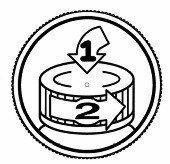
Step 1: Press firmly on the closure.
Step 2: Twist the closure while pressing.
NDC 58060-002-02
Storage
Store in the dark at 25°C (77°F), excursions permitted to 15-30°C (59-86°F) [see USP Controlled Room Temperature].
PATIENT TREATMENT DATA
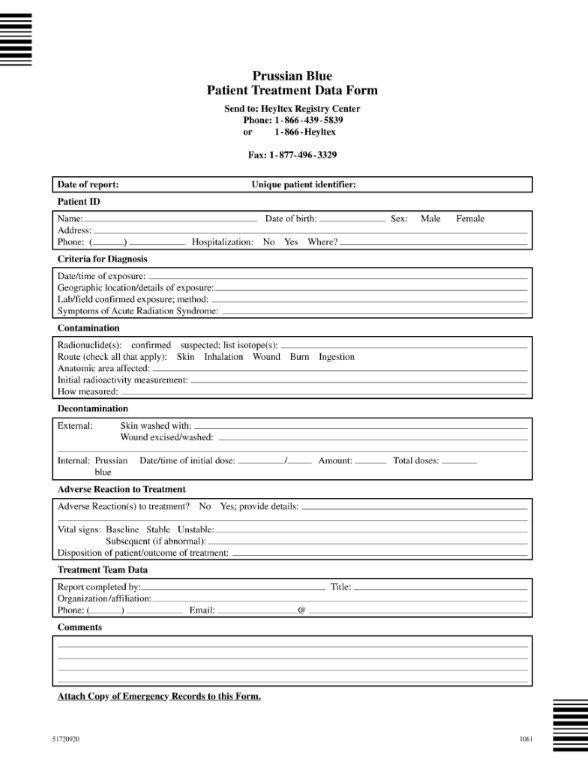
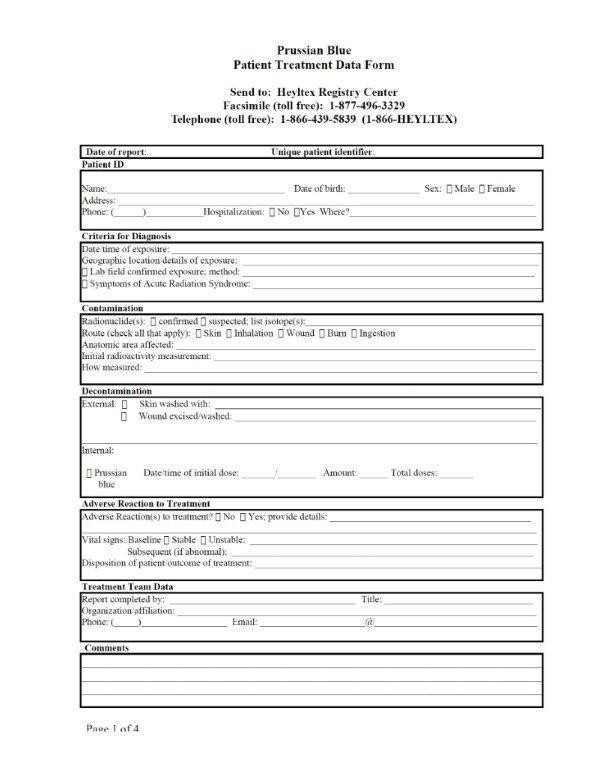

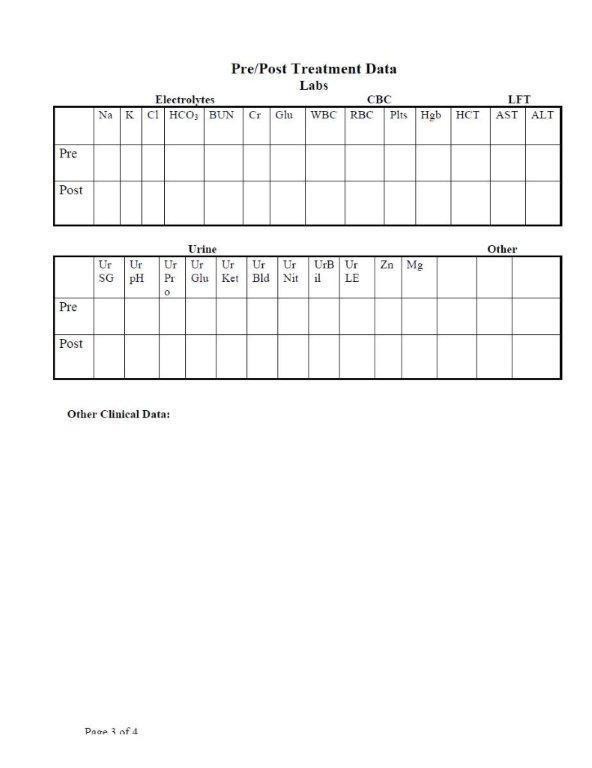

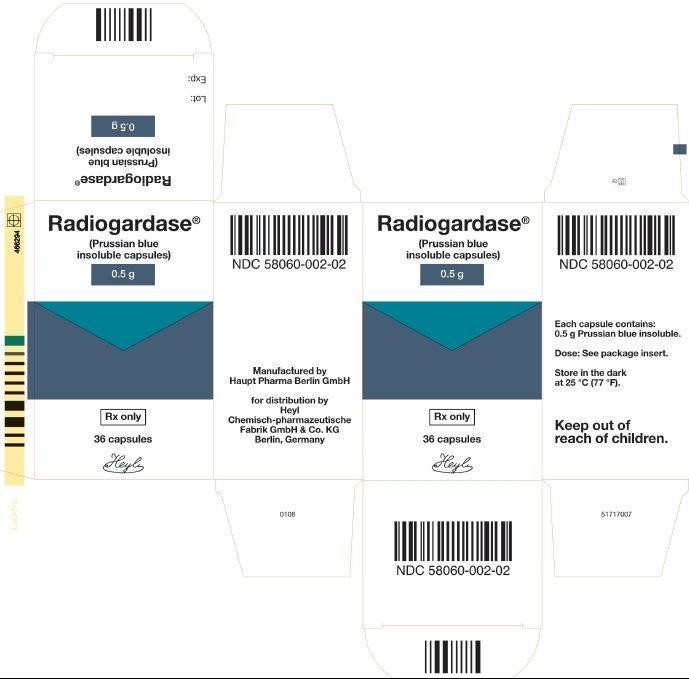
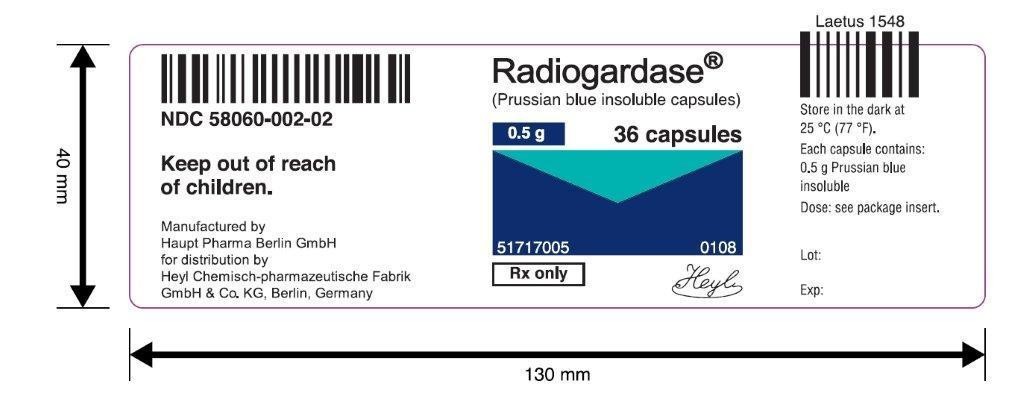
RadiogardasePrussian blue insoluble capsules CAPSULE
| |||||||||||||||||||||||||||||||||||||||||||||||||||||||||||||||||||||||||||||||||